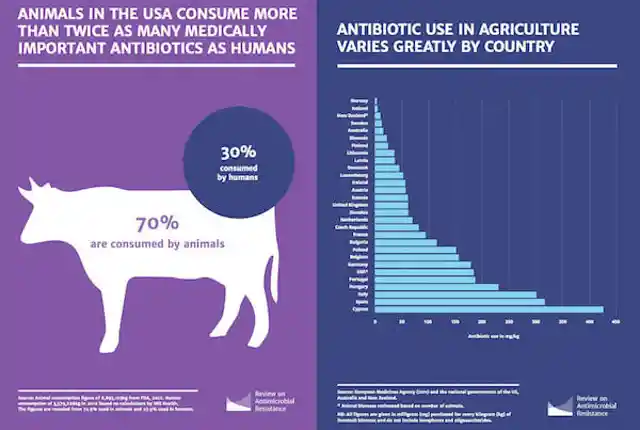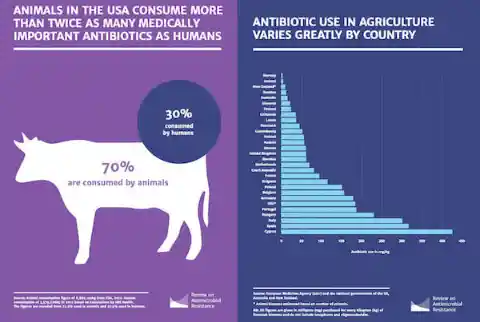Hidden Danger
There are more antibiotics in your food than you realize. What’s worse, many strains of these antibiotics only have limited research of their effects on human health.
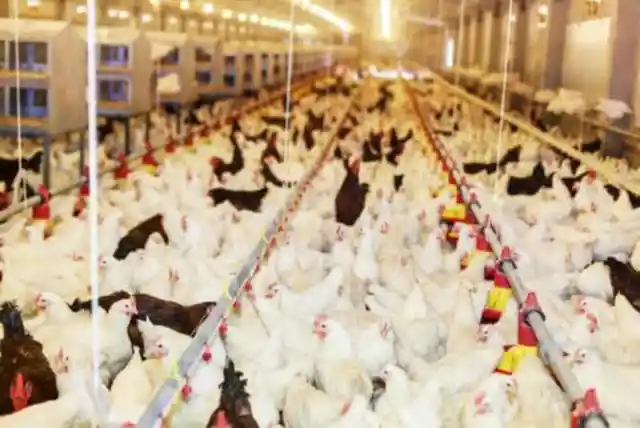
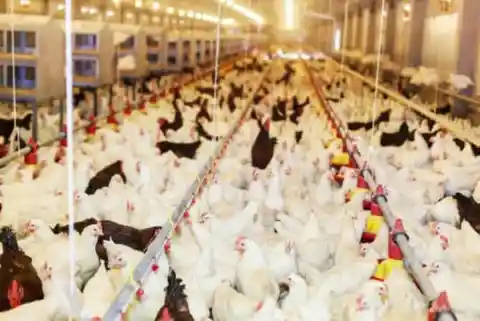
It’s long overdue that North Americans take a good hard look at the widespread use of antibiotic drugs in farming
Conventional farming administers antibiotics to both individual animals on an as-needed basis, and to large groups at once. For example, 16% of US dairy cows receive antibiotics to treat an infection, but almost 100% will be administered antibiotics for disease prevention.
Disease prevention
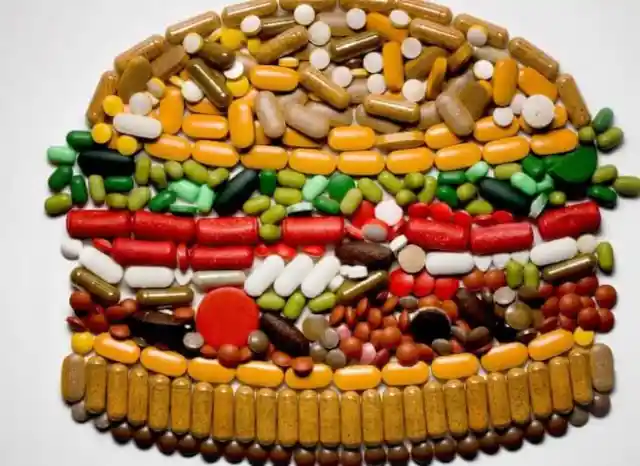
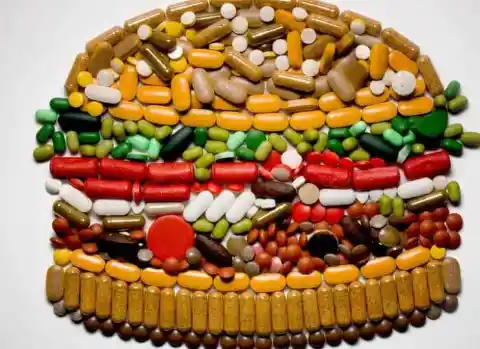
Similarly, 88% of US pigs are given antibiotics in their feed for disease prevention and growth promotion. (5) Recent estimates suggest almost 25 million pounds of antibiotics are used non-therapeutically for chickens, pigs, and cows each year (compared to 3 million pounds of antibiotics prescribed to people!).
Positive Reports?


Thankfully, a recent report is taking the right step to help the public stay informed about what’s really on their plates.
What’s Wrong With Antibiotics In Meat?
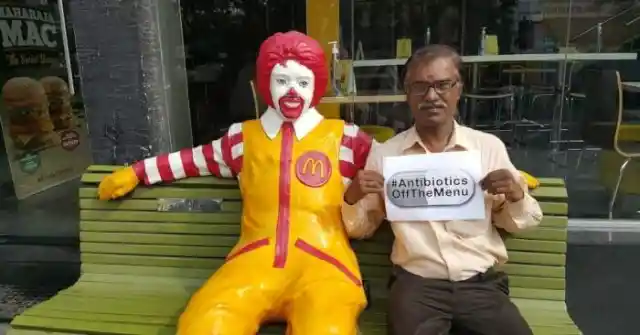

Overuse of antibiotics in agriculture and farming is not just a problem in itself, but a symptom of a deep underlying problem with modern meat industry. Steven Roach, food safety program director at Food Animal Concerns Trust and analyst for Keep Antibiotics Working says, “The meat industry’s misuse and overuse of antibiotics reflects larger problems of poor animal welfare and farm management practices in U.S.
Solution


meat production.”
However, antibiotic use also creates a serious problem for public health.
Healthier Options
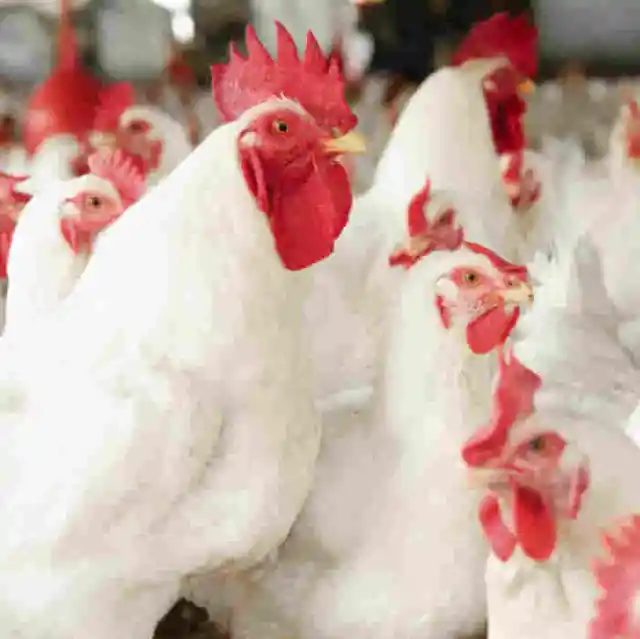

As David Wallinga, MD, Senior Health Officer with the Natural Resources Defense Council (NRDC) explains, “Overusing antibiotics in meat production helps to create drug-resistant superbugs—our nation’s largest chain restaurants can be part of the problem, or part of the solution.”
Wallingo goes on to say, “Restaurants billing themselves as a ‘healthier’ option, like Subway, have a particular responsibility to live up to that image by reducing antibiotics.
The truth


Consumer demand for meat raised without routine antibiotics is transforming the marketplace; the companies continuing with business-as-usual will be left behind.” (2)
The truth is, antibiotic resistant superbugs aren’t a threat looming in the future- they’re already a serious problem. In the USA alone, 2 million people contract antibiotic-resistant infections every year- 23,000 of those people die.
Chain Reaction II Project
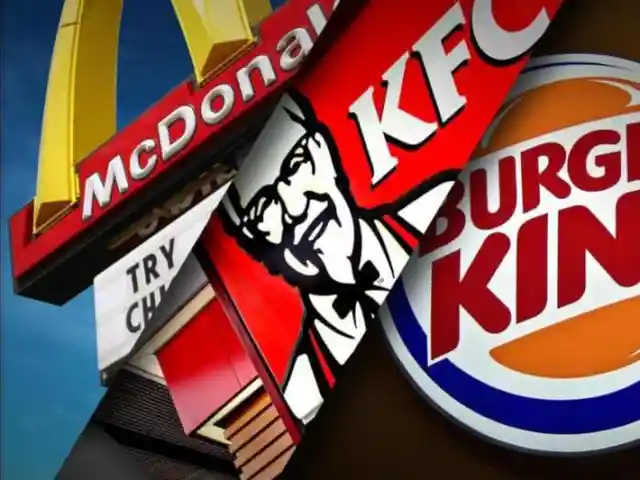
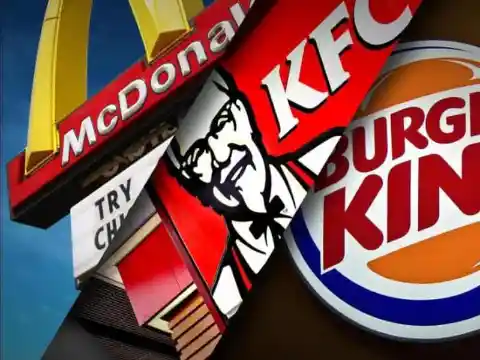
(4)
Luckily, you as a consumer can take advantage of resources that have been made available to the public to help you make informed decisions about the food you choose to buy. One such project is known as Chain Reaction II.
How Much Antibiotics Are In Fast Food?
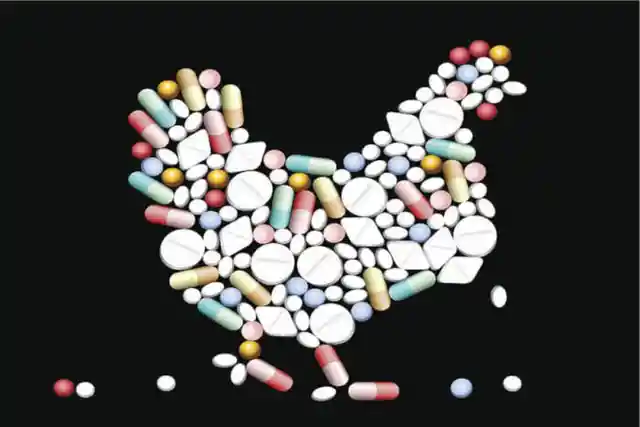
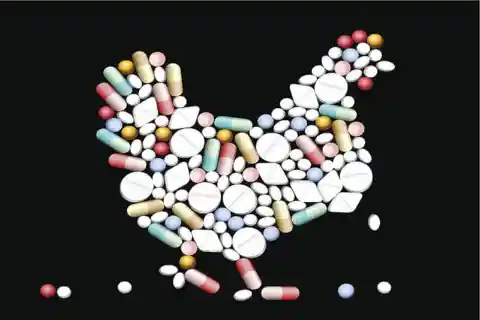
Chain Reaction II is the second annual collaborative report that provides the public with information about antibiotics in the food they eat. It was researched and written by organizations Friends of the Earth, Natural Resources Defense Council, Consumers Union, Food Animal Concerns Trust, Keep Antibiotics Working, and Center for Food Safety (1).
Grading System
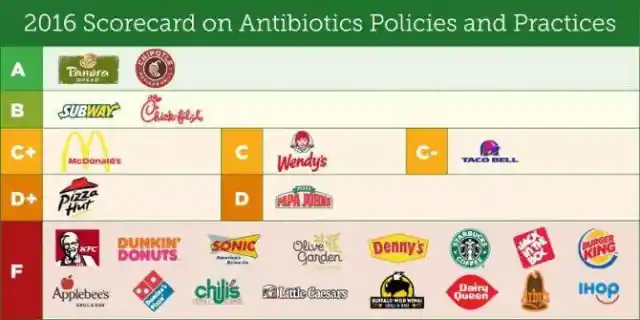
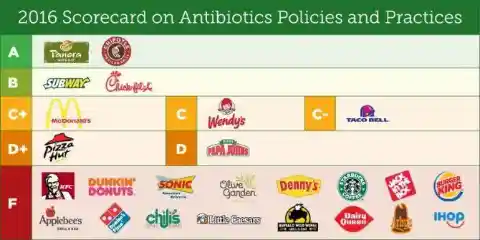
In the report, food companies are given a comprehensive grade for their corporate policies on antibiotics and the implementation of those policies.
What were the main findings?


Compared to the first Chain Reaction report, Chain Reaction II showed that twice as many fast food chains could receive a passing “grade” (3). This is certainly encouraging and demonstrates that the public’s cry for transparency in the food industry is not entirely falling on deaf ears.
What were the main findings?
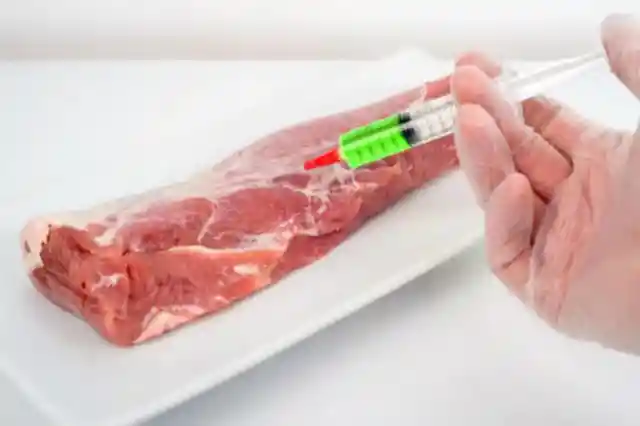
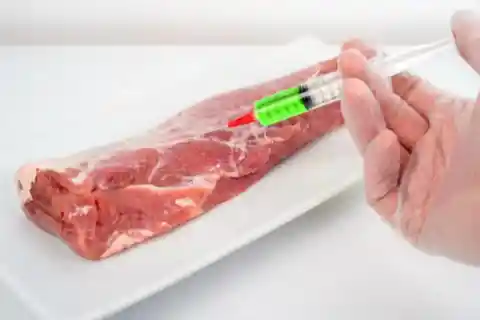
However, the report also reveals that there is still a far way to go.
Verdict
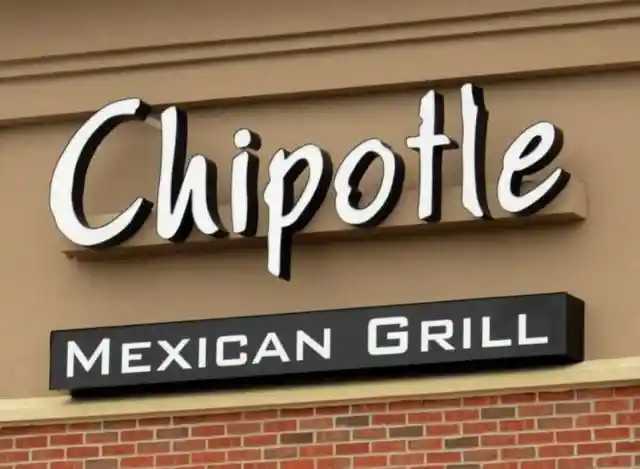
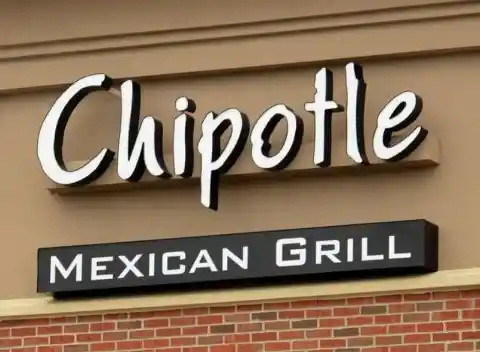
Out of the 25 companies analyzed only 2, Panera Bread and Chipotle, received an A grade, which is “reserved for companies that have policies limiting the routine use of antibiotics across all the meat and poultry they serve and publicly affirming that the majority of their meat and poultry is sourced accordingly.”(3)
Fast food chains receiving B or C grades have mixed progress and remain concerns. McDonald’s, for example, managed to source 100% of its chicken from antibiotic-free farming but made no similar progress for their pork or beef products.
Verdict Part 2


Other mediocre grades were given to: Wendy’s, Taco Bell, Subway, Chick-fil-A
D grades were earned by companies who made some, but very little efforts to curb antibiotics use. Papa John’s, for example, created good corporate policies, but only implemented them to a fraction of their meat purchases.
A Map


Meanwhile, the 16 fast food chains that earned a pitiful F grade, were noted to have taken no steps at all to minimize antibiotic use. These failing chains include: KFC, Dunkin Donuts, Sonic, Olive Garden, Denny’s, Starbucks, Jack in the Box, Burger King, Applebee’s, Domino’s Pizza, Chilis, Little Caesar’s, Buffalo Wild Wings, Dairy Queen, Arby’s, IHOP
The Chain Reaction report can provide a map to help consumers navigate the tricky waters of the fast food industry, but if you want to avoid antibiotic-filled meats more effectively, it’s important to stay informed while grocery shopping as well.
